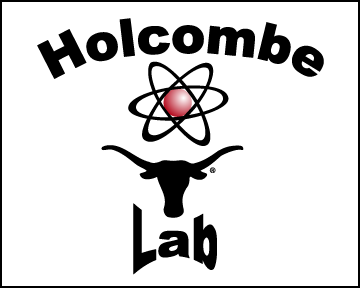Adam Rowland
Personal History: Adam Rowland is a recent graduate of the group, leaving in December 2008 after completing his dissertation "Explorations of electrothermal vaporization inductively coupled plasma time-of-flight mass spectrometry for isotopic analysis." I was born and raised in Texas. The majority of my childhood was in Lake Jackson, which is a bit south of Houston. I did my undergraduate work at Texas A&M University, in College Station. I received my BS in Chemistry in 2004. I now live here in Austin and am enjoying the graduate student life. I married Jessica Daniel (now Rowland) on June 12, 2004. She works with the American Cancer Society here in Austin. |
 |
Graduate Research Interests
Though I worked on a variety of activities, my work was largely devoted to 2 topics:
1. Separation of Rb and Sr by using the thermal control capabilities of the an electrothermal vaporizer combined with ICP-MS. This allowed for removal of the isobaric overlap at mass 87 and has possible applications in the field of geological isotopic dating.
Peer-reviewed Publications:
- Rowland, Adam, Housh, Todd B., Holcombe, James A.Use of electrothermal vaporization for volatility-based separation of Rb–Sr isobars for determination of isotopic ratios by ICP-MS. JAAS (2008), in press.
- Stair, Jacqueline L.; White, Brianna R.; Rowland, Adam; Holcombe, James A. Quantitative determination of single-bead metal content from a peptide combinatorial library. Journal of Combinatorial Chemistry (2006), 8(6), 929-934.
Undergraduate Work
I performed a wide variety of undergraduate research. In the summer of 2002, I did an REU session at Oklahoma State in the McKeever Lab in conjunction with the Arkansas Oklahoma Center for Space and Planetary Science. In Spring 2003 at A&M, I did some research in the Simanek group on the possible development of an AB4 type dendrimer. From the fall of 2003 to summer of 2004, I worked in the Clearfield labs at A&M. My work was in the synthesis and characterization of high surface area organometallic materials. The first work focused on layered zirconium compounds of alkyl diphosphonates. I later moved into zirconium aryl diphosphonates and some very interesting tin phosphonate compounds.
Resulting publications:
1. McKeever, S. W. S.; Banerjee, D.; Blair, M.; Clifford, S. M.; Clowdsley, M. S.; Kim, S. S.; Lamothe, M.; Lepper, K.; Leuschen, M.; McKeever, K. J.; Prather, M.; Rowland, A.; Reust, D.; Sears, D. W. G.; Wilson, J. W. Concepts and approaches to in situ luminescence dating of martian sediments. Radiation Measurements (2003), 37(4-5), 527-534.
2. Subbiah, Ayyappan; Pyle, David; Rowland, Adam; Huang, Jin; Narayanan, R. Aravinda; Thiyagarajan, P.; Zon, Jerzy; Clearfield, Abraham. A Family of Microporous Materials Formed by Sn(IV) Phosphonate Nanoparticles. Journal of the American Chemical Society (2005), 127(31).
3. Huang, Jin; Subbiah, Ayyappan; Pyle, David; Rowland, Adam; Smith, Brentley; Clearfield, Abraham. Globular Porous Nanoparticle Tin(IV) Phenylphosphonates and Mixed Methyl Phenylphosphonates. Chemistry of Materials (2006), 18(22), 5213-5222
Contact Information
Adam Rowland
1 University Station, A5300
Austin, TX 78712
(512) 471-1180
